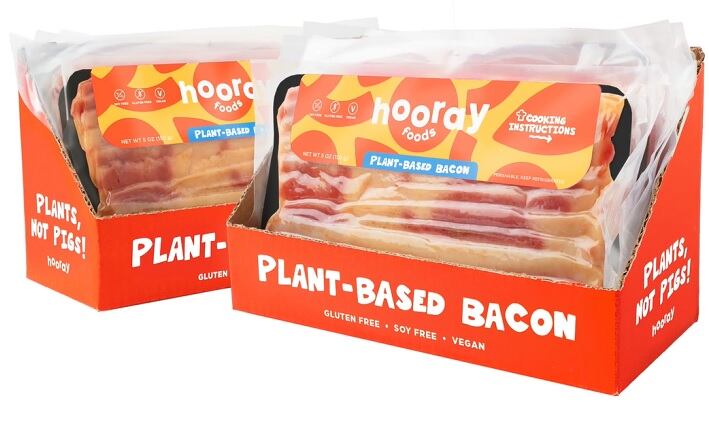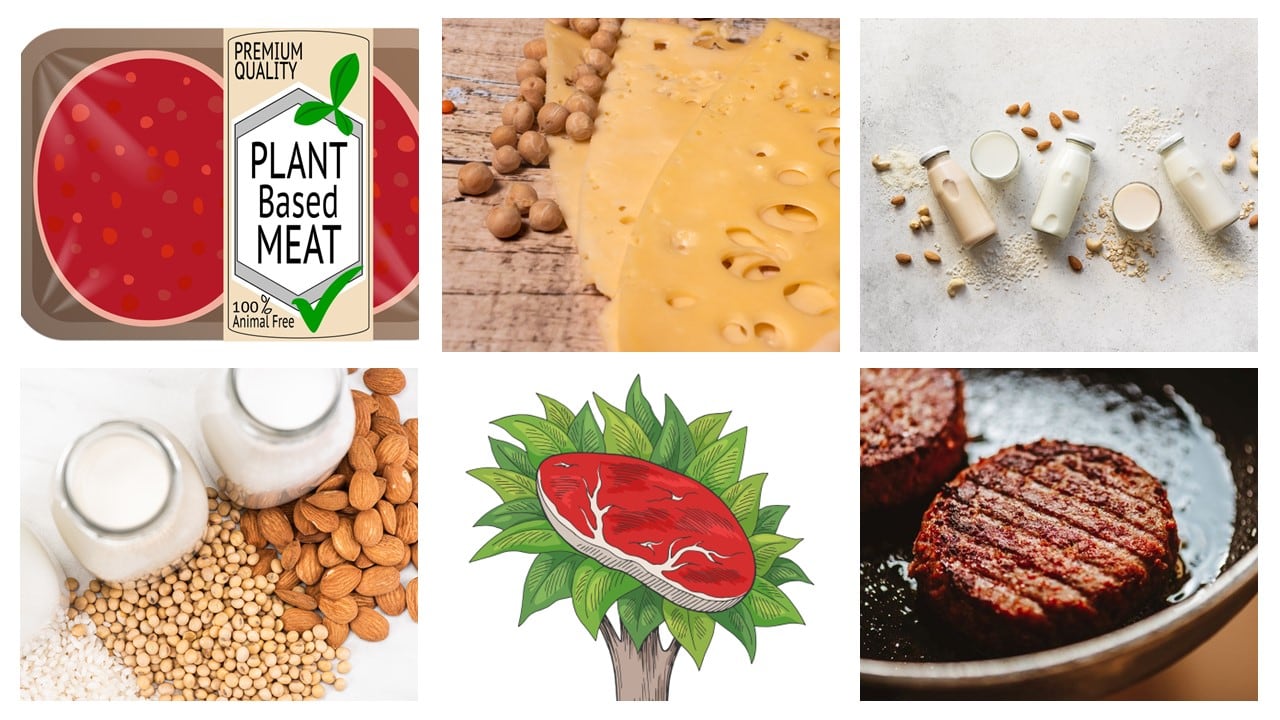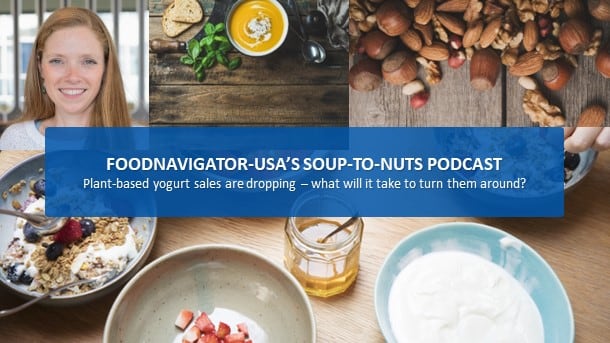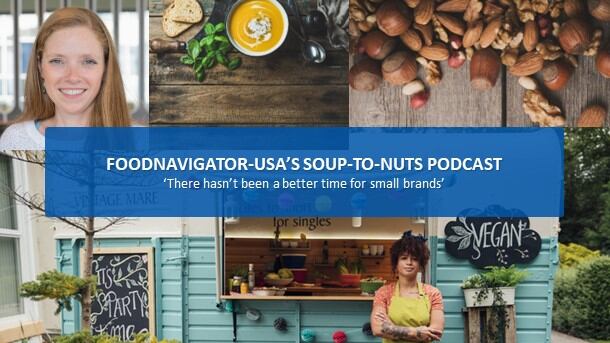According to market research by Evergi, sales of plant-based bacon increased 1% in the second quarter of 2022, which might not sound like much but is notable considering sales of plant-based alternatives declined across the board, with frozen meals and bowls the sole other exception in the period.
Evergi reported in the second quarter of last year, plant-based meat/burgers fell 7%, chicken alternatives dropped 6% and both plant-based sausage and fish fell a staggering 17%.
The overall plant-based meat segment’s freefall continued through the end of 2022 with dollar sales for the calendar year dropping 0.3% to $1.18b, unit sales falling 8.2% to 220m and volume sales falling 5.4% to 155m pounds, according to data from IRI crunched by 210analytics.
‘It has been a tough year for plant-based in general, but we’ve been doing pretty well’
Not all players – or segments – in the plant-based meat market are suffering though. Among those growing are startup Hooray Foods, which two years ago launched its plant-based bacon made from a blend of white rice flour, pea and tapioca starch, coconut oil and natural flavors and colors with a patent-protected technology for making fatty meats.
“It has been a tough year for plant-based in general, but we’ve been doing pretty well. We’re seeing our sales grow and every month we have increasing velocity and our margins are doing well,” CEO Sri Artham told FoodNavigator-USA.
Already in 1,000 stores, including Whole Foods nationwide, Wegmans, Raley’s and more, the startup has booked about $125,000 in orders in January and February – well above its orders from last spring that hovered just over $50,000.
The company also has a growing presence in food service and sees significant opportunity for increased distribution and brand-building at restaurants going forward.
Retailers’ confidence in the startup can be traced back in part to strong velocities surrounding in-store demos, which Artham says attracts long lines of people “excited about the bacon sizzling and creating a great aroma.”
Many of the people who try Hooray Foods’ bacon in stores immediately purchase it, said Artham, pointing to upticks in units sold that correlate with demonstration frequency. For example, the brand saw units sold jump from about six or seven per day in the first half of last July in Whole Foods’ Harlem store to 20 units in late July following two demos. This repeats in early September when three demos in the same store brought velocities up to nearly 40 units from around 17 units in late August.
“This puts us on a pretty steady path to getting to profitability by this year,” Artham said, noting in 2022 the company went from just under negative $400,000 in January to about negative $50,000 in November.
Hooray seeks $150,000 to help close gap to profitability
Once Hooray Foods crosses the profitability line, Artham says it will not be reliant on outside capital. But for now, the young brand needs an infusion of $150,000 to bridge the gap, which it is actively raising through a community round hosted on Wefunder – a crowdfunding platform that allows the general public to invest as little as $100 in startups alongside venture capitalists.
As of Feb. 9, the company had raised $89,500 of its goal, with a substantial boost of $50,000 from lead investor John Parapatt of Pfizer.
Artham turned to Wefunder to raise capital after a successful fundraise on the platform previously and after struggling to raise funds through more traditional routes.
“I am finding it much harder to raise funds from VCs in the past year, but the crowdfunding platforms are doing quite well with a record Q4 last year. So, we went where there is an appetite to invest,” he said.
He explained that while he still sees investor appetite for plant-based products in the seed stage, companies with meaningful revenue that launched three or four years ago – like Hooray Foods – are unable to capture investor attention.
“I’m not the only one who feels this way. There are peers of ours who are in a similar stage that are feeling the same challenge,” he said.
Despite that, Artham said he is pleased with his experience crowdfunding, in part because the benefits go beyond raising capital – it also helps raise brand awareness and generate buzz to boost sales.
“It is a great opportunity to get our biggest fans and consumers and friend and family to join our journey,” Artham said.
Hooray strives to improve distribution, quality & price
The funds from the current raise will help Hooray Foods increase its distribution, starting with more stores in California and the Northeast where the brand already has notable traction.
Artham said he also wants to expand into new channels and across more diverse banners to reach a broader consumer base. To do this, he acknowledges, Hooray’s bacon will need to come down in price.
“Our current price is a barrier. It is typically around $8.50 at a grocery store, which can be a bit pricey for people, and we see when we go on promo closer to $6.50 that more people will try it for the first time or stock up,” he said.
To do this, the company will need to invest in automating more of its production process, which Artham says is his “primary hope for the next couple of years.”
He said he also hopes to improve the quality and value proposition of the brand, which already has strong selling features including a healthier nutrition profile and better fat dispersion to more closely mimic pork bacon.
This will include incorporating more organic and regenerative organic ingredients and eventually becoming organic certified, Artham said.
He added that he is exploring more sustainable packaging options as well.
Eventually, the business plans to launch additional products, potentially including pepperoni, but before it does that Artham says he wants to remain focused on the company’s flagship bacon to ensure a solid foundation for future growth.




